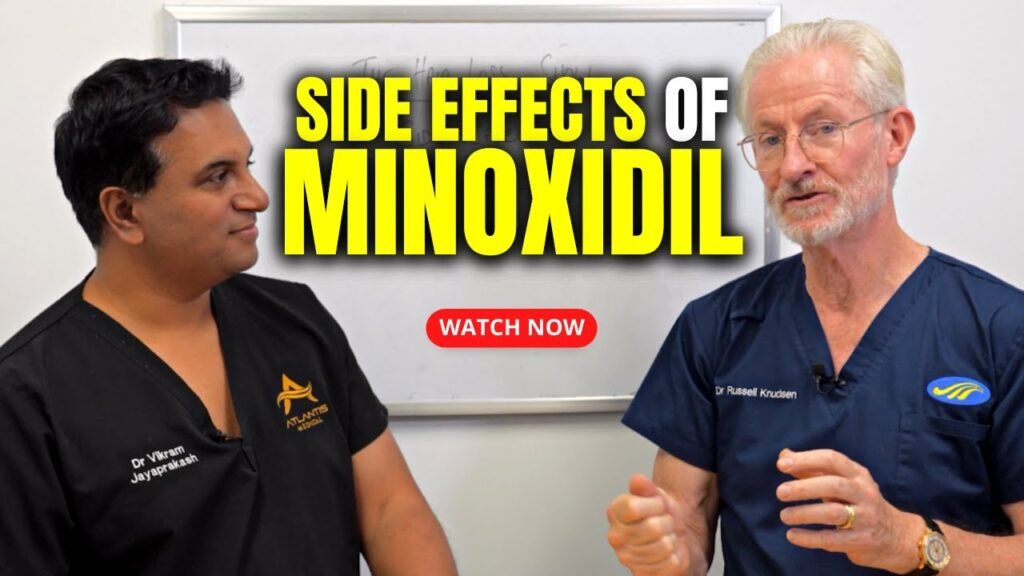Understanding the Hidden Risks of Minoxidil Allergic Reactions
Minoxidil, widely recognized for its efficacy in treating hair loss, is not without its hidden risks, particularly concerning allergic reactions. For individuals considering or currently using this topical treatment, understanding these risks is crucial for maintaining both safety and health. While Minoxidil is generally well-tolerated, some users may experience unexpected allergic responses that can complicate their treatment journey.
Common Symptoms of Minoxidil Allergic Reactions
Allergic reactions to Minoxidil can manifest in various ways, often beginning with mild symptoms that may escalate if not addressed. Common indicators include itching, redness, or irritation at the site of application. More severe reactions might involve swelling, difficulty breathing, or hives, necessitating immediate medical attention. Its essential for users to be vigilant and responsive to these signs, as early detection can prevent more serious health complications.
Factors Contributing to Allergic Reactions
Several factors can contribute to the likelihood of experiencing an allergic reaction to Minoxidil. Sensitivity to inactive ingredients in the formulation, such as propylene glycol or alcohol, can trigger reactions in some individuals. Additionally, those with a history of allergies or sensitive skin may be at higher risk. Understanding these factors and consulting with a healthcare provider can help mitigate potential allergic responses and ensure a safer experience with Minoxidil.
By being informed about the hidden risks associated with Minoxidil allergic reactions, users can take proactive steps to safeguard their health while benefiting from this popular hair loss treatment.
Common Symptoms of a Minoxidil Allergic Reaction
When using Minoxidil, a topical treatment commonly employed for hair regrowth, its crucial to be aware of potential allergic reactions. An allergic reaction to Minoxidil can manifest through various symptoms, which may require immediate medical attention. Recognizing these symptoms early can help prevent more severe complications.
Skin Irritation
One of the most common symptoms of a Minoxidil allergic reaction is skin irritation. Users may experience redness, itching, or a burning sensation at the application site. In some cases, the skin may also develop a rash or hives. If you notice persistent skin irritation that worsens over time, it is advisable to discontinue use and consult a healthcare professional.
Respiratory Issues
Though less common, respiratory issues can also signal an allergic reaction to Minoxidil. Symptoms may include difficulty breathing, wheezing, or a tightness in the chest. These signs should not be ignored, as they may indicate a severe allergic response that requires urgent medical intervention. If you experience any of these symptoms, seek emergency medical help immediately.
Facial Swelling
Facial swelling, particularly around the eyes, lips, or tongue, is another potential symptom of an allergic reaction to Minoxidil. This swelling can occur suddenly and may be accompanied by other signs of an allergic response. Monitoring for any unusual swelling is important, and immediate medical advice should be sought if this symptom occurs.
How to Identify if Youre Allergic to Minoxidil
Identifying an allergy to minoxidil, a common treatment for hair loss, involves observing specific symptoms and reactions following its application. Skin reactions are the most immediate indicators of an allergy. If you notice redness, itching, or a rash on the scalp where minoxidil is applied, it could be a sign of an allergic response. In some cases, users may experience a burning sensation or scaling of the skin, which should prompt discontinuation of use and consultation with a healthcare professional.
Systemic Reactions
While skin reactions are the most common, some individuals may experience systemic allergic reactions. These can include swelling of the face, lips, or tongue, difficulty breathing, and dizziness. Such symptoms indicate a severe allergic reaction, known as anaphylaxis, which requires immediate medical attention. It is crucial to seek emergency care if these symptoms occur after using minoxidil.
Patch Testing
Before starting minoxidil treatment, a patch test can help determine if you have an allergy to the product. Apply a small amount of minoxidil to a discreet area of the skin and wait 24 hours. If any signs of irritation or an allergic reaction occur, it is advisable to avoid using the product. Consulting with a dermatologist for alternative treatments or further allergy testing can provide additional guidance tailored to your specific needs.
Preventive Measures for Minoxidil Allergic Reactions
To minimize the risk of allergic reactions to minoxidil, its essential to follow a few preventive measures before and during its use. Firstly, conducting a patch test is highly recommended. Apply a small amount of minoxidil on a discreet area of the skin, such as the inside of the elbow, and wait for 24 to 48 hours. Observe for any signs of an allergic reaction, such as redness, itching, or swelling. If any adverse reactions occur, it is crucial to consult a healthcare professional before proceeding with its application on the scalp.
Another important preventive measure is to choose the appropriate formulation and concentration of minoxidil. Minoxidil is available in various forms, including liquid solutions and foam, with concentrations typically ranging from 2% to 5%. Individuals with sensitive skin or a history of allergies may benefit from starting with a lower concentration to assess tolerance. Additionally, opting for formulations with fewer added ingredients, such as fragrances or preservatives, can help reduce the risk of irritation.
Incorporating good application practices can also play a significant role in preventing allergic reactions. Ensure that the scalp is clean and dry before applying minoxidil, and avoid using other hair products that may contain harsh chemicals simultaneously. After application, wash your hands thoroughly to prevent accidental transfer to other sensitive areas, such as the eyes or face. Consistent monitoring for any signs of irritation or allergic reaction is essential, and any concerns should be promptly addressed with a healthcare provider.
What to Do if You Experience a Minoxidil Allergic Reaction
If you experience a minoxidil allergic reaction, its crucial to take immediate steps to manage the situation effectively. Minoxidil, commonly used for hair growth, can sometimes cause adverse reactions in sensitive individuals. Symptoms of an allergic reaction may include itching, redness, swelling, or a rash at the application site. In more severe cases, you might experience difficulty breathing or facial swelling. Recognizing these signs early is vital for your safety.
Stop Using Minoxidil Immediately
The first step you should take if you suspect an allergic reaction to minoxidil is to stop using the product right away. Continuing to apply it can exacerbate symptoms and lead to more serious health issues. Ceasing use immediately helps prevent further exposure to the allergen, which is critical in managing allergic reactions.
Consult a Healthcare Professional
After discontinuing use, its important to consult with a healthcare professional as soon as possible. A doctor or dermatologist can provide a proper diagnosis and recommend appropriate treatment options, which may include antihistamines or topical steroids to alleviate symptoms. They can also help determine whether its safe to try alternative hair growth treatments or if further allergy testing is needed to identify specific sensitivities.
Monitor Your Symptoms
While waiting for medical advice, closely monitor your symptoms. If you notice any worsening or if new symptoms develop, such as hives or difficulty breathing, seek emergency medical attention immediately. Keeping track of your symptoms can provide valuable information to your healthcare provider, assisting in a more accurate diagnosis and effective treatment plan.


